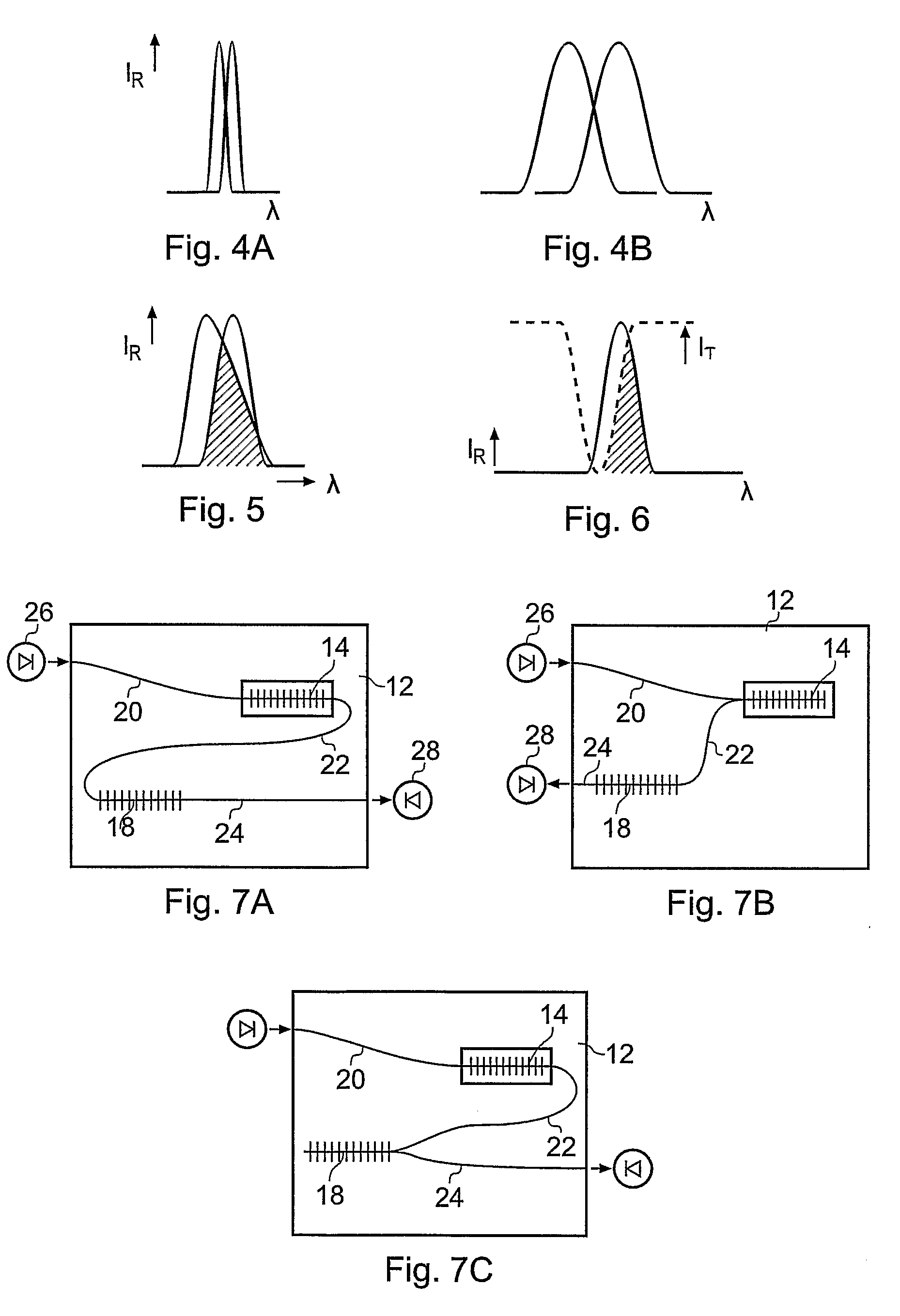Optical Sensors
a technology of optical sensors and gratings, applied in the field of optical sensors, can solve the problems of difficult control in the geometry of the fibre, tedious work of the fibre, etc., and achieve the effect of simplifying the structure and fabrication of the sensor
- Summary
- Abstract
- Description
- Claims
- Application Information
AI Technical Summary
Benefits of technology
Problems solved by technology
Method used
Image
Examples
Embodiment Construction
[0041] An optical reflective grating such as a Bragg grating comprises a periodic modification of refractive index within an optical waveguiding structure, where the waveguiding structure comprises a core surrounded by a cladding material of a lower refractive index than the core. This structure guides optical waves by total internal reflection at the boundary between the two refractive indices. The grating reflects light propagating along the waveguide of wavelengths that falls within a bandwidth defined by the magnitude and dimensions of the periodic refractive index modification, and transmits light of other wavelengths.
[0042] If a region of the core of the waveguide is exposed or nearly exposed by removing all or part of a portion of the cladding, and a fluid applied to the region so that the optical field of light propagating in the waveguide extends into the fluid, the refractive index of the fluid modifies the effective modal index experienced by the propagating light. This ...
PUM
 Login to View More
Login to View More Abstract
Description
Claims
Application Information
 Login to View More
Login to View More - R&D
- Intellectual Property
- Life Sciences
- Materials
- Tech Scout
- Unparalleled Data Quality
- Higher Quality Content
- 60% Fewer Hallucinations
Browse by: Latest US Patents, China's latest patents, Technical Efficacy Thesaurus, Application Domain, Technology Topic, Popular Technical Reports.
© 2025 PatSnap. All rights reserved.Legal|Privacy policy|Modern Slavery Act Transparency Statement|Sitemap|About US| Contact US: help@patsnap.com



